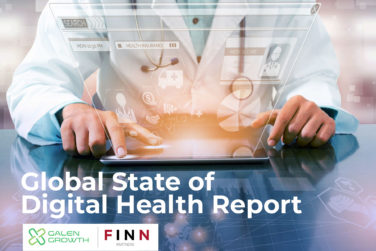In many respects, the arrival of generative artificial intelligence (AI) represents an entirely expected leap forward. It was always going to be simply a matter of time before we arrived here, technologists having assembled the necessary computing power to bring this new wave of technology to life. What is genuinely surprising is how soon it came. And with its arrival, AI is moving from the cutting edge into the mainstream of clinical research. ChatGPT, and the Large Language Model (LLM) on which it rests, has truly woken up the whole clinical research community to the possibilities that AI brings. And with other LLMs arriving seemingly on a weekly basis, it has of course also focused attention on the need for care in how we use this powerful new tool.
With much uncertainty ahead, however, it is already clear that we have only just begun to scratch the surface of what’s possible with this new technology. While there is no shortage of ideas for its potential applications, especially across the clinical development continuum, that may prove to be one of our biggest immediate challenges: choosing which of the myriad opportunities to work on first.
For those who may have questions about the applications of generative AI or are hesitant about its potential impact, it’s helpful to think about aspects of clinical research where the need for further transformation is already clear and ask: how can generative AI help us?
Accelerating Clinical Trial Timelines
Notwithstanding our desire to speed important new medicines to patients in need, the planning, conduct, analysis and synthesis of programs of clinical research is a lengthy process. By significantly reducing the time taken to create high-quality first drafts of the documentation associated with clinical trials we can certainly make a useful dent in the amount of time taken.
Evidence that this is achievable comes from the coding world where computer programmers have already established that generative technologies can halve code development times by suggesting lines of code. We should expect similar levels of productivity improvement in clinical trial documentation. Furthermore, LLMs will enable rapid systematic review of the relevant literature and past clinical protocols to support a trial design that is reliably informed by all that is scientifically known to date.
Increasing Patient Engagement
The pandemic not only impacted how patients physically participate in clinical trials but also led to noticeably decreased engagement, discontinued participation, and reduced adherence to treatment regimens. Increased adoption of patient engagement tools—mainly reliant on smartphone app-based technologies—was a natural response. However, these proved to be only of limited value.
In part this is because the patient’s relationship with their physician remains central to their willingness to participate in clinical trials and solutions that seek to reduce or obviate that need have proved wide of the mark. Generative AI solutions will almost certainly be used to enable better smartphone apps, but they will also support new ways to engage patients that harness the essential foundations of the patient-physician relationship.
Making Sense of Real-world Evidence
Real-world data creates the basis for insights into a patient’s experiences of disease and treatment in a naturalistic setting. It speaks to medicine effectiveness and safety that scale and complement clinical trial data. With access to vast and growing databases that store this accumulated data (whether healthcare records, biobanks, genomic records, or data collected passively via wearables) coupled with increasingly sophisticated data ingestion and analytics platforms, generative AI/machine learning (ML) technologies will accelerate the process of identifying the patterns embedded in these data stores, accelerating the creation of new insights and hypotheses.
Breaking Down Critical Barriers to Participation
Rates of clinical trial participation are low. Only in certain rare diseases and oncology—and only in medically advanced markets—do we see participation rates as high as 5%. Meanwhile, enrollment remains one of the key rate-limiting steps in clinical trial conduct. Whether generative AI solutions can improve the productivity of clinical sites to the point where they have the capacity for higher patient participation must be investigated as a matter of priority.
A related priority is the need to increase levels of diversity in clinical trials, which has rightly been called out by regulatory agencies and researchers alike. Most major clinical trial sponsors and CROs already have active programs in place to address this, though it is fair to say that to date progress to redress the balance is less rapid than we would like. This must therefore be seen as a key area for early evaluation in the development of LLM solutions. Reaching the relevant communities via trusted sources (including family, friends, physicians, and pastors) will be key. Our task is to figure out how to utilize generative AI to do so.
Final Considerations for Embracing Generative AI
To take full advantage of this opportunity, CROs need to invest and strategize. Obviously, access to talent—particularly natural language processing (NLP) engineers and AI product development teams—will become even more of a challenge as the market for these skills heats up. Workflows will need re-engineering, and staff will need training, but less immediately obvious areas will also require attention.
First and fundamentally, AI has no concept of truth and falsehood. It “learns” from the data fed to it, and so with that understanding it is vital that users carefully evaluate what it produces, which is never more than a good first draft. (Correspondingly, it does not remove the need for subject matter experts. On the contrary it means they are freed up to spend more time being experts by reducing the burden of gathering information and data inputs.)
Similarly, tool developers will need to think carefully about the need to balance access to information and data while ensuring access to sensitive information is appropriately safeguarded.
We also are beginning to see the emergence of legislative and regulatory concerns, fueled by public discourse, regarding the pace at which the technology continues to evolve and worries about what the unscrupulous may seek to use it for. It is therefore essential that application developers carefully consider the need for principled frameworks to guide their AI development programs. These should be designed to ensure respect for the expectations and obligations of patients and other clinical research participants as well as the other stakeholders.
The future of generative AI in clinical research is bright! Certainly, significant challenges are ahead, but there are also tremendous opportunities that will help shape biopharmaceutical and clinical research for the benefit of patients around the world. Moving forward with urgency—and a clear plan of how to balance the benefits and risks—will ensure we get this right.









